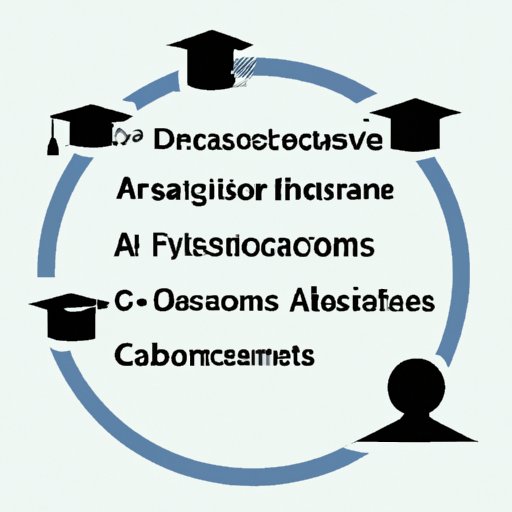Introduction
An Associate of Science (AS) degree is a two-year degree program that provides students with the foundational knowledge and skills needed to pursue a career in a scientific field. This type of degree is typically offered at community colleges and technical schools, but may also be available through some four-year universities. The AS degree is designed to provide students with a broad understanding of the sciences as well as specialized training in a particular area. By earning an AS degree, students can gain the skills and knowledge necessary to pursue a wide range of careers in the sciences.
What Is an Associate of Science Degree?
The Associate of Science (AS) degree is a two-year degree program that combines general education courses, such as English and mathematics, with specialized courses in the sciences. Students have the option to choose from a variety of concentrations, including biology, chemistry, physics, computer science, and engineering. Many programs also offer electives in related fields, such as environmental science, mathematics, and psychology. Upon completion of the program, graduates will receive an associate’s degree in science.

Benefits of Earning an Associate of Science Degree
Earning an Associate of Science degree offers many benefits to students. According to a report by the American Association of Community Colleges, “students who complete an associate’s degree experience higher rates of employment, higher wages, and more career opportunities than those who only complete a certificate or no postsecondary credential.” In addition, many employers prefer candidates who have earned an associate’s degree, as it demonstrates a commitment to learning and professional development.
In addition to providing career advancement opportunities, an AS degree also gives students the opportunity to explore their interests in the sciences. For example, students may choose to focus on a specific field, such as biology or chemistry, or they may choose to take a broad approach and explore multiple disciplines. This type of degree program provides students with the flexibility to tailor their studies to their individual goals and interests.
Overview of the Associate of Science Program
An Associate of Science degree typically requires 60 to 64 credits, which can be completed within two years of full-time study. Depending on the school, some programs may require additional credits or coursework to fulfill graduation requirements. Most programs include a combination of general education courses and specialized courses in the sciences. Common courses include mathematics, physics, chemistry, biology, and computer science.

Choosing an Associate of Science Program
When choosing an AS program, there are several factors to consider. It is important to research the curriculum of each program to ensure that it meets your individual needs. Additionally, you should consider the transferability of credits when selecting a program, as this can make it easier to transfer to a four-year institution if you decide to pursue a bachelor’s degree. Finally, it is important to consider the cost of the program, as tuition costs can vary significantly between schools.
Types of Associate of Science Degrees
There are several types of Associate of Science degrees available. These include an Associate of Science in General Studies, an Associate of Science in Applied Science, an Associate of Science in Computer Science, and an Associate of Science in Engineering. Each type of degree program has its own set of courses and focuses on a different area of the sciences. It is important to research each type of degree program to determine which one is best suited to your individual needs and goals.

Differences Between an Associate of Science and an Associate of Arts Degree
Although both degrees are two-year programs, there are some important differences between an Associate of Science and an Associate of Arts degree. An Associate of Science degree typically focuses on the sciences and technology, while an Associate of Arts degree focuses on the humanities and social sciences. Additionally, credits from an Associate of Science degree are often more easily transferable to a four-year university than credits from an Associate of Arts degree.

Understanding the Requirements for an Associate of Science Degree
To earn an Associate of Science degree, students must typically complete 60 to 64 credits. Most programs require a mix of general education courses, such as English and mathematics, as well as specialized courses in the sciences. Some programs may also include prerequisites or specializations, such as laboratory work or internships. It is important to understand the specific requirements of each program before enrolling.
Career Paths Open to Those with an Associate of Science Degree
An Associate of Science degree opens up a wide range of career opportunities. Those with an AS degree can pursue traditional career paths, such as medical technician, pharmaceutical technician, or lab technician. Additionally, those with an AS degree can pursue alternative career options, such as computer programmer, software engineer, or systems analyst. Regardless of the chosen career path, an AS degree provides students with the necessary skills and knowledge to pursue a successful career in the sciences.
Conclusion
An Associate of Science degree provides students with the skills and knowledge needed to pursue a variety of career paths in the sciences. This type of degree offers many benefits, such as increased job prospects and higher wages. When selecting an AS program, it is important to consider the curriculum, transferability of credits, and cost. Additionally, it is important to understand the differences between an Associate of Science and an Associate of Arts degree. By understanding the benefits of an AS degree and the career paths open to those with an AS degree, students can make an informed decision about their future.
(Note: Is this article not meeting your expectations? Do you have knowledge or insights to share? Unlock new opportunities and expand your reach by joining our authors team. Click Registration to join us and share your expertise with our readers.)
